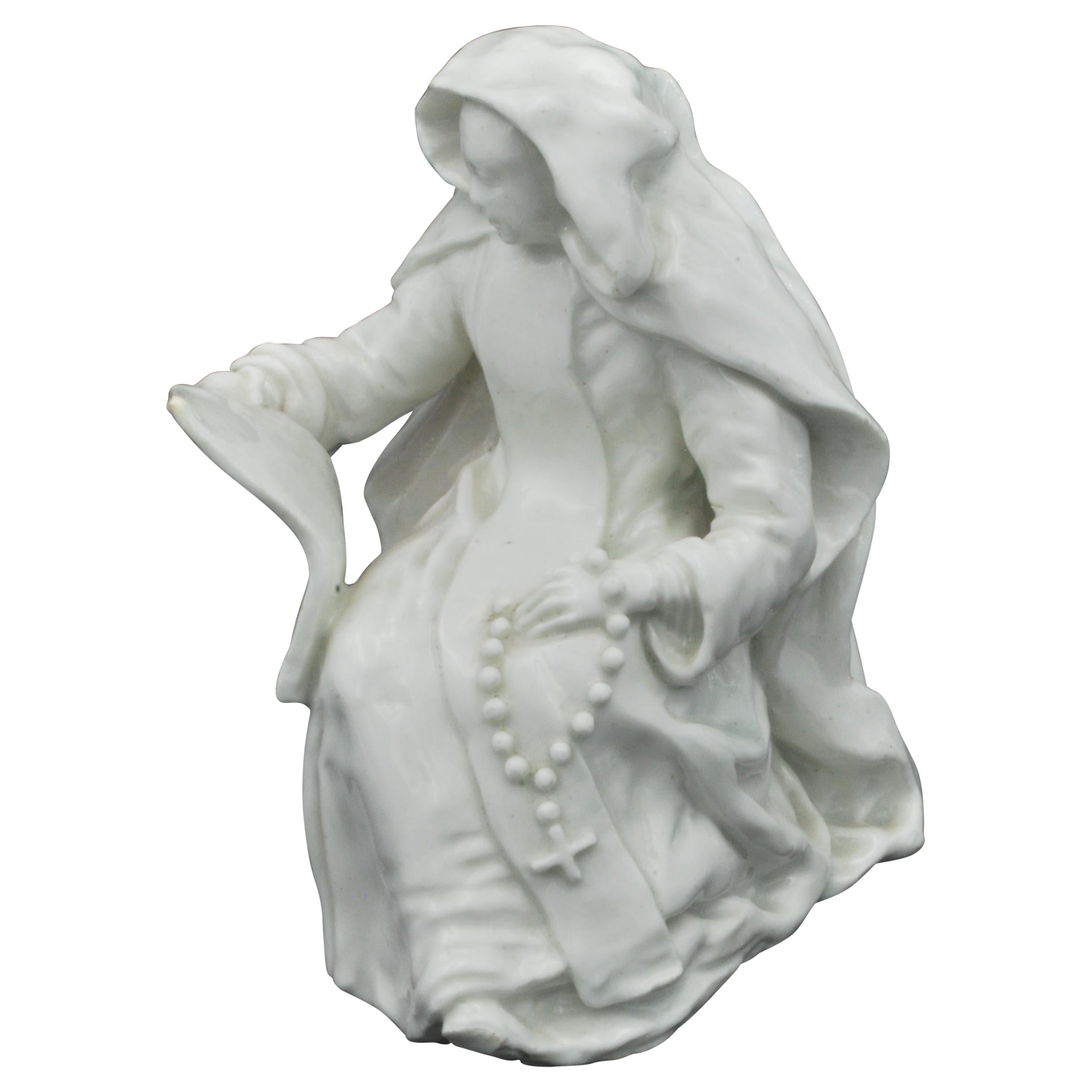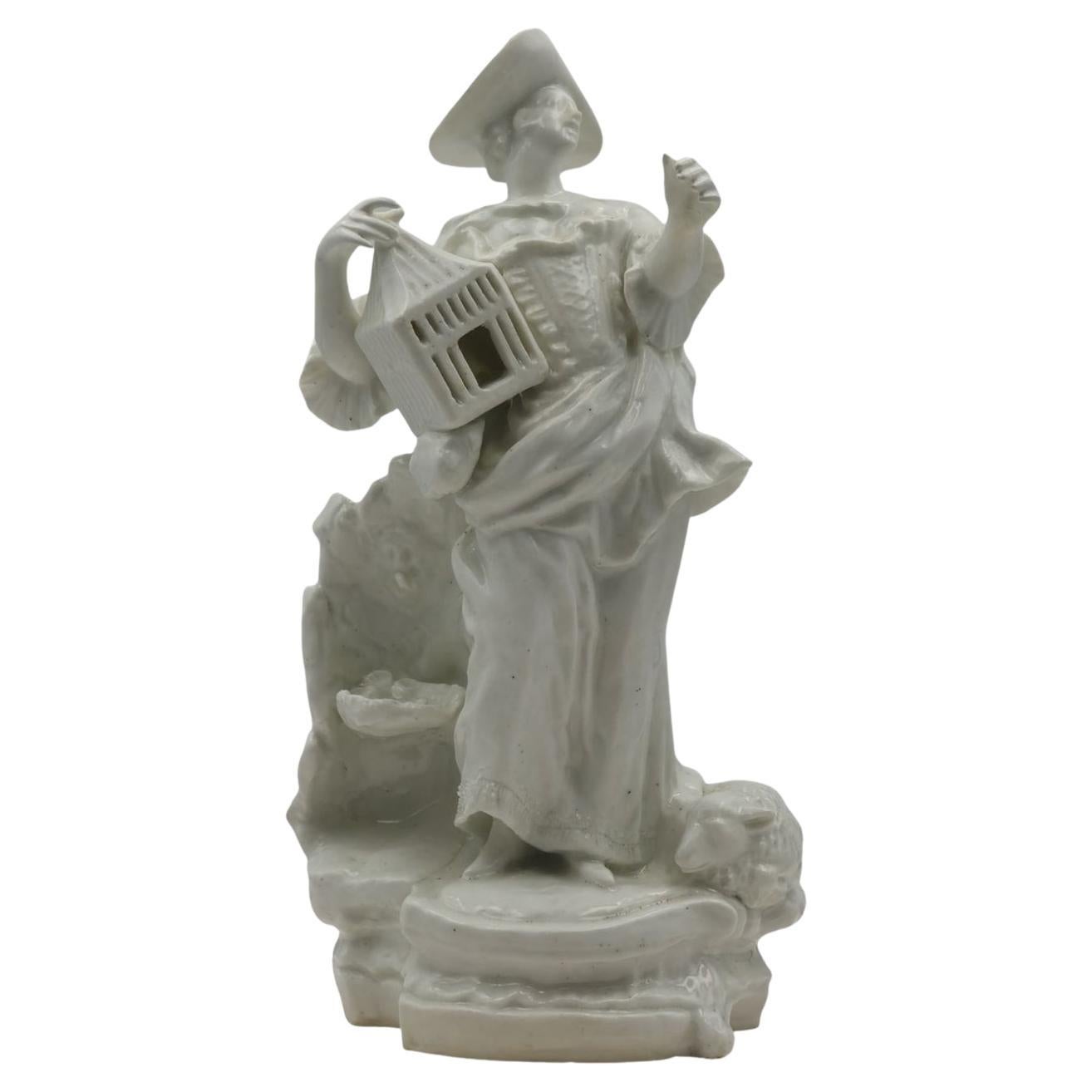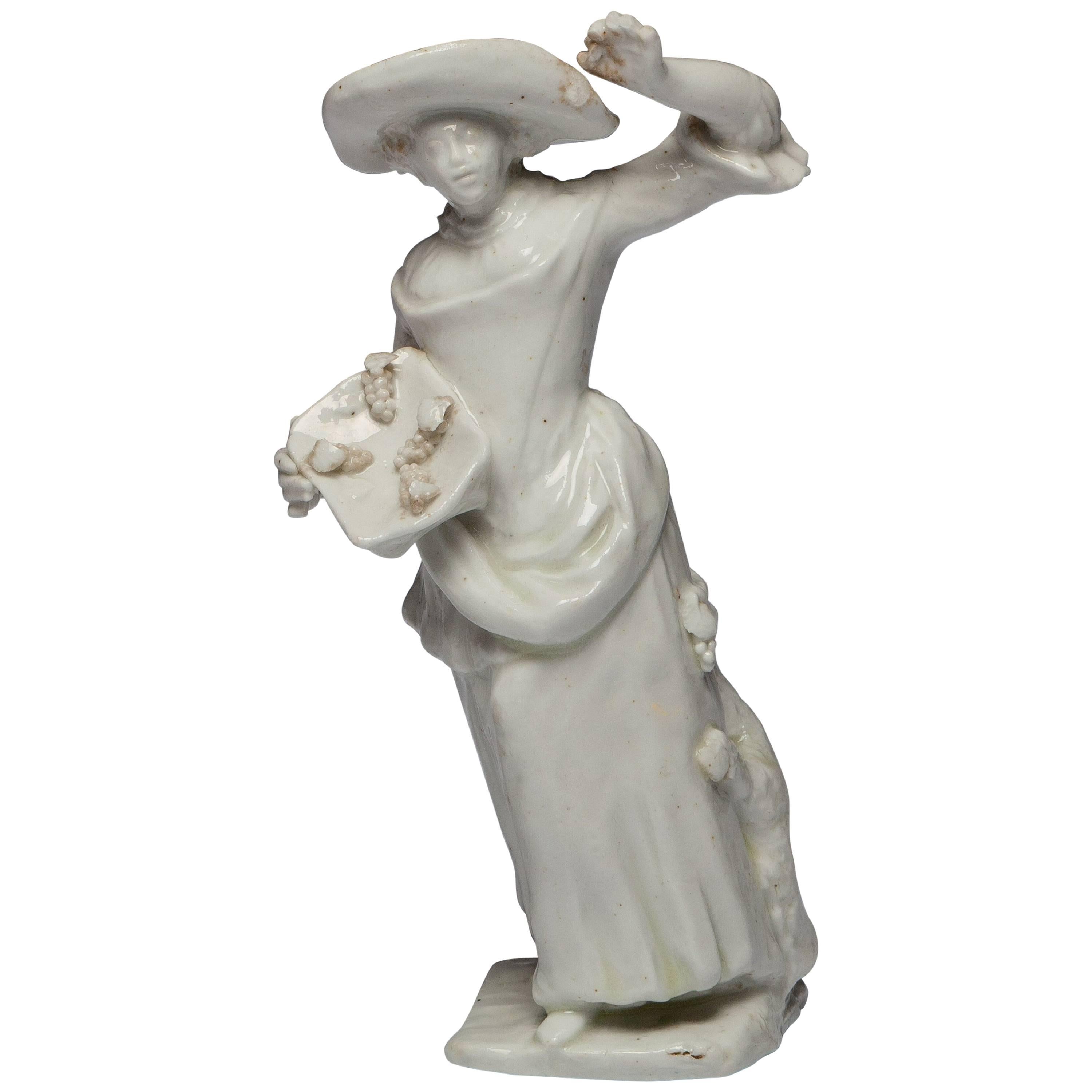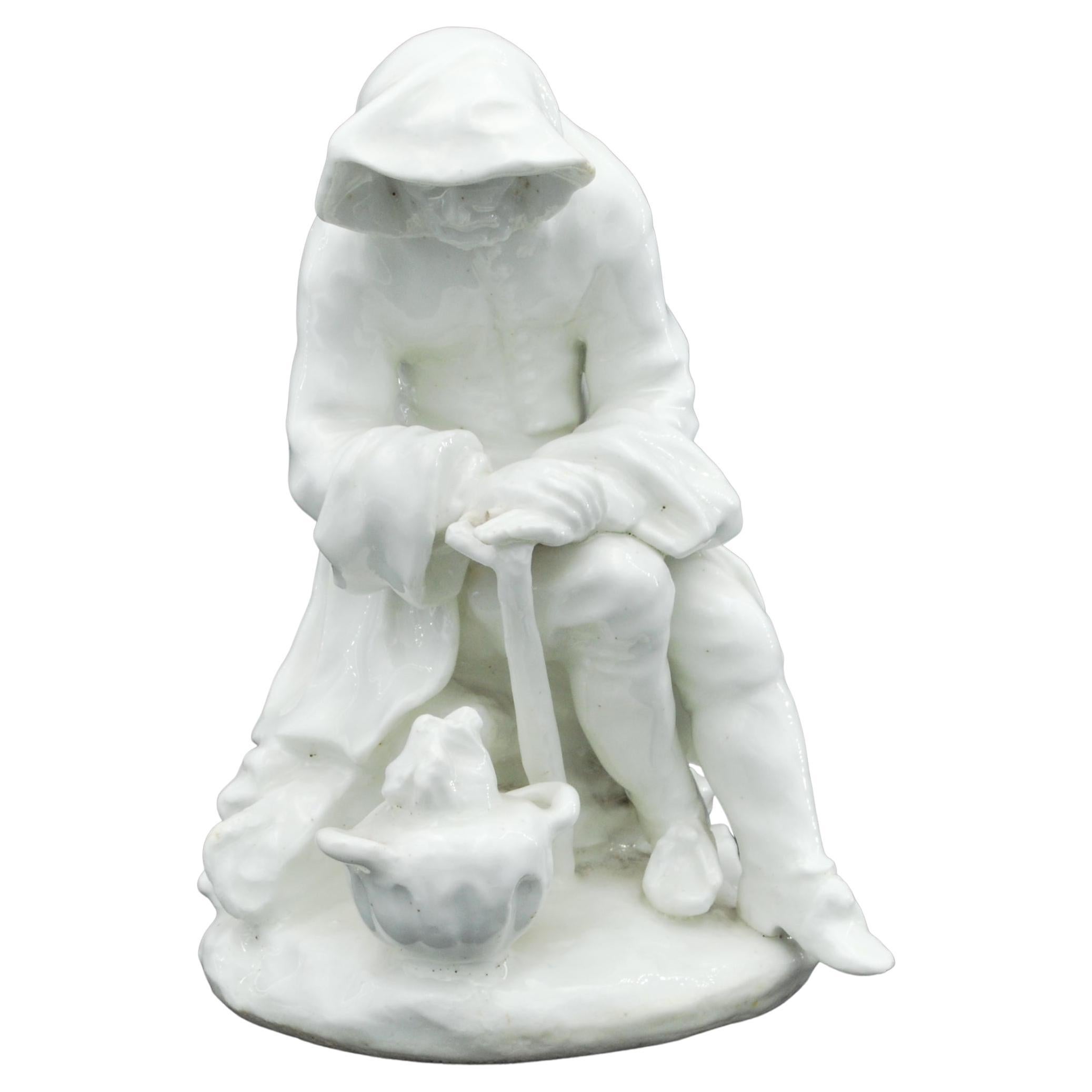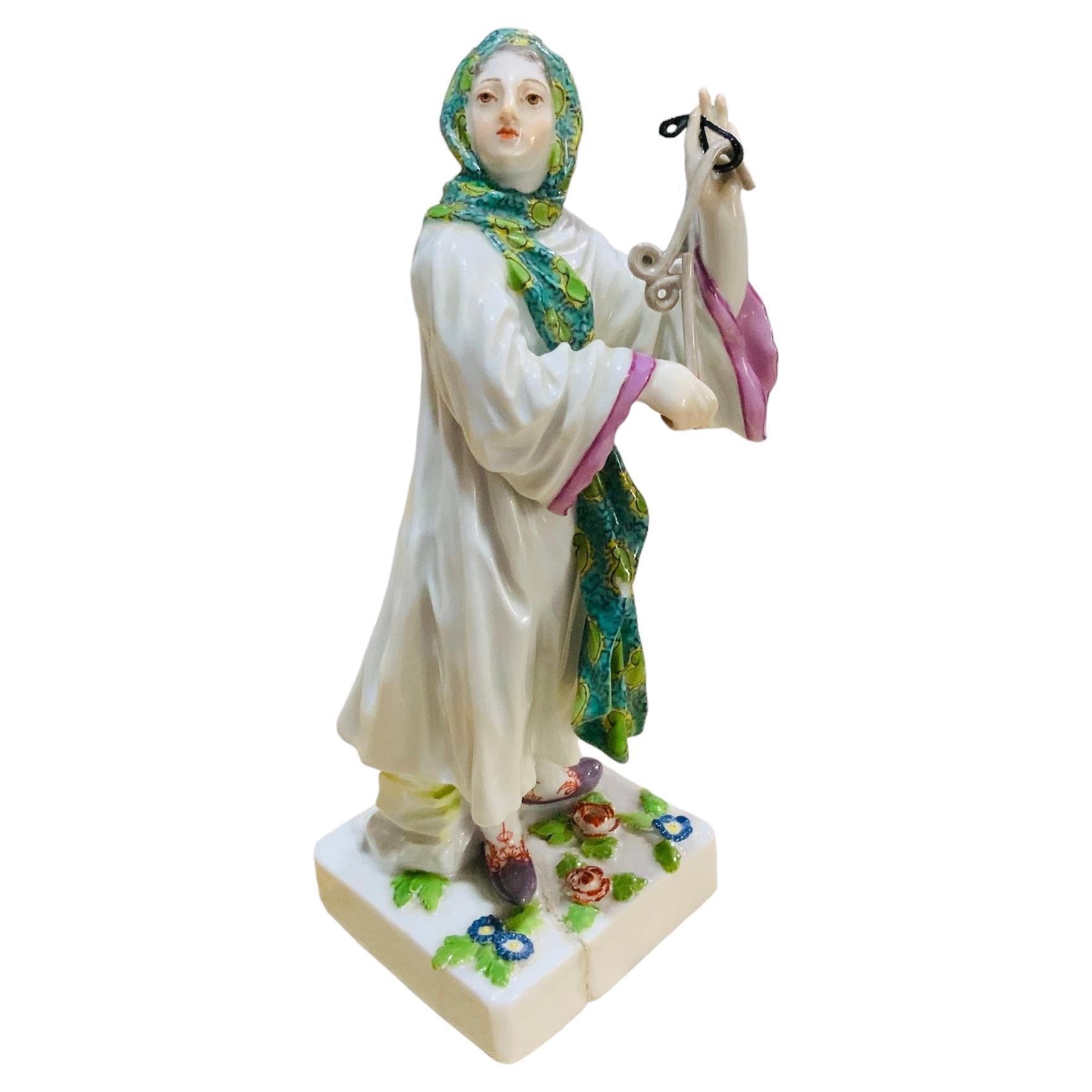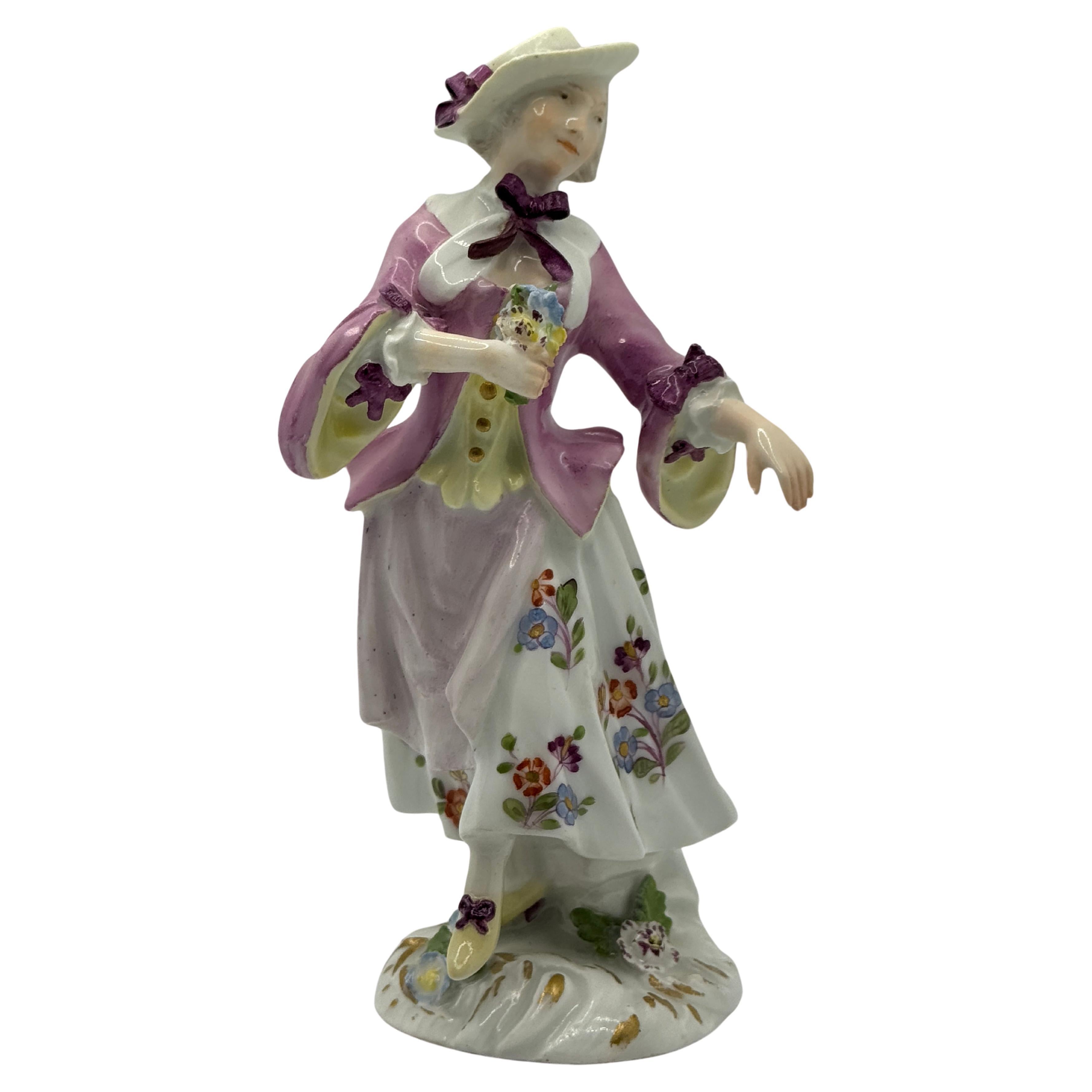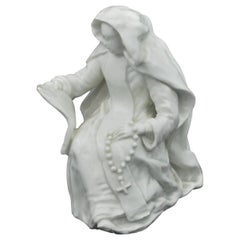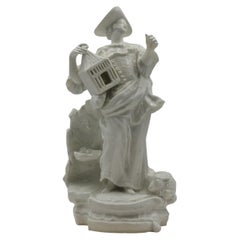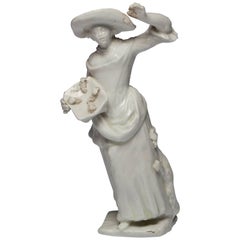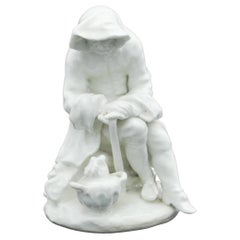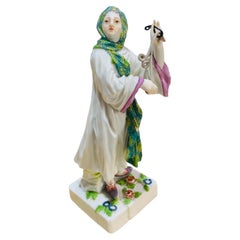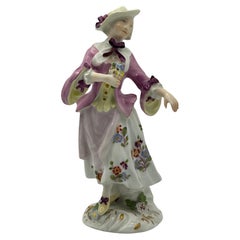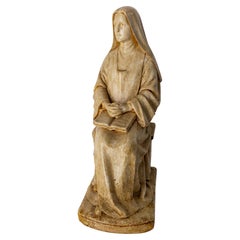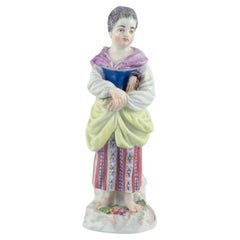Items Similar to Figure of a Nun, Perhaps Heloise, Bow Porcelain Factory, circa 1750
Want more images or videos?
Request additional images or videos from the seller
1 of 12
Figure of a Nun, Perhaps Heloise, Bow Porcelain Factory, circa 1750
$2,000
£1,515.38
€1,738.78
CA$2,814.32
A$3,093.72
CHF 1,625.91
MX$37,568.97
NOK 20,282.88
SEK 19,216.60
DKK 12,976.94
About the Item
A classic example of early bow porcelain.
The figure is of a Dominican Nun, and is based on a continental model, probably Meissen.
Bow produced a number of apparently religious figures, and there is much disagreement on whether these were intended as devotional items (for recusants or for the Continental market), or whether they were 'rebranded' as theatrical models. Certainly, by the 1770s we see this model named as 'Heloise', a 12th Century author who was forced into a convent after becoming pregnant outside marriage.
The play "Abélard et Héloïse" and was written by the French playwright Pierre de Belloy. The play was performed in Paris in 1750 and was a critical and commercial success. The play tells the story of the love affair between Héloïse and Abelard, and focuses on the passion and tragedy of their relationship.
It was one of the first plays to dramatize the story of Héloïse and Abelard, and its popularity helped to establish the couple as symbols of romantic love and intellectual passion. "Abélard et Héloïse" was widely performed throughout France and was also popular in other European countries, further cementing the couple's place in the cultural imagination.
- Creator:Bow Porcelain (Manufacturer)
- Dimensions:Height: 6 in (15.24 cm)Width: 3.5 in (8.89 cm)Depth: 5 in (12.7 cm)
- Style:Neoclassical (Of the Period)
- Materials and Techniques:Porcelain,Molded
- Place of Origin:
- Period:
- Date of Manufacture:circa 1750
- Condition:Minor losses. Flat chip to toe, not generally noticeable. Otherwise very fine.
- Seller Location:Melbourne, AU
- Reference Number:Seller: 56151stDibs: LU3151332773622
About the Seller
5.0
Vetted Professional Seller
Every seller passes strict standards for authenticity and reliability
Established in 2005
1stDibs seller since 2017
80 sales on 1stDibs
- ShippingRetrieving quote...Shipping from: Melbourne, Australia
- Return Policy
Authenticity Guarantee
In the unlikely event there’s an issue with an item’s authenticity, contact us within 1 year for a full refund. DetailsMoney-Back Guarantee
If your item is not as described, is damaged in transit, or does not arrive, contact us within 7 days for a full refund. Details24-Hour Cancellation
You have a 24-hour grace period in which to reconsider your purchase, with no questions asked.Vetted Professional Sellers
Our world-class sellers must adhere to strict standards for service and quality, maintaining the integrity of our listings.Price-Match Guarantee
If you find that a seller listed the same item for a lower price elsewhere, we’ll match it.Trusted Global Delivery
Our best-in-class carrier network provides specialized shipping options worldwide, including custom delivery.More From This Seller
View AllA Nun, perhaps a theatrical figure. England, probably Plymouth, circa 1750
By Plymouth Porcelain Factory 1
Located in Melbourne, Victoria
An interesting soft-paste porcelain figure of a Dominican Nun, perhaps the theatrical figure Heloise.
Although the Nun appears in various versions in European and English porcelain,...
Category
Antique Late 18th Century English Neoclassical Porcelain
Materials
Porcelain
Figure representing Matrimony, Bow Porcelain Factory, circa 1750
By Bow Porcelain
Located in Melbourne, Victoria
An attractive allegorical figure of Matrimony, reprsented by a woman in her best clothing, holding a cage.
The Bow Porcelain factory was the first English porcelain producer; these ...
Category
Antique Mid-18th Century English Neoclassical Porcelain
Materials
Porcelain
Figure of The Vintner's Companion, Bow Porcelain Factory, circa 1748
By Bow Porcelain
Located in Melbourne, Victoria
Moulded in a dense body in typical muses modeller style and with slightly drab glaze. She stands by a fruiting vinestock and carries an open basket of grapes in her right hand, her e...
Category
Antique Mid-18th Century English Neoclassical Figurative Sculptures
Materials
Porcelain
$4,690 Sale Price
30% Off
Winter, from the Four Seasons, Bow Porcelain Factory, circa 1750
By Bow Porcelain
Located in Melbourne, Victoria
A personification of Winter, from The Four Seasons.
Unusually fine condition for a figure of this period.
Category
Antique Mid-18th Century English Neoclassical Porcelain
Materials
Porcelain
Fortune Teller Figure. Bow Porcelain C1750
By Bow Porcelain
Located in Melbourne, Victoria
A young woman standing with the remains of a staff in her left hand, and in apparent apprehension as her future and fortune is being read by an exotic, enigmatic, bearded figure, app...
Category
Antique Mid-18th Century English Neoclassical Porcelain
Materials
Porcelain
$14,700 Sale Price
30% Off
Figure Columbine with her Hurdy Gurdy, Bow Porcelain Factory, circa 1756
By Bow Porcelain
Located in Melbourne, Victoria
From the Commedia dell’arte, shown seated on a tree stump and playing her favourite instrument. Probably after Kandler, who described the model as a Tyrolean maiden playing a lyre.
...
Category
Antique Mid-18th Century English Rococo Porcelain
Materials
Porcelain
You May Also Like
Meissen Hand Painted Porcelain Figurine Of A Middle East Lady
By Meissen Porcelain
Located in Guaynabo, PR
A Meissen Porcelain figurine of a Middle East lady. It depicts a lady dressed with a white and pink robed garb. She is wearing a Middle East headdress painted green and turquoise col...
Category
Antique Early 19th Century German Other Porcelain
Materials
Porcelain
$1,560 Sale Price
20% Off
18th Century Meissen Figurine of a Lady
By Meissen Porcelain
Located in Basildon, GB
A good 18th Century Meissen Figurine of a Lady, circa 1740, modelled by Peter Reinecke wearing a hat with a ribbon, floral dress and holding a bouquet of flowers and standing on a fl...
Category
Antique 1740s German Rococo Porcelain
Materials
Porcelain
Nun Reading Gospels Patinated Plaster Statue French, Late 19th Century
Located in Labrit, Landes
Patinated plaster french statue of a religious reading the Bible.
Antique French, circa 1880s
This nun character inspires serenity.
Created in 1855, the Giscard Manufacture in Tou...
Category
Antique Late 19th Century French Figurative Sculptures
Materials
Plaster
Meissen, Germany, Porcelain Figure, Young Woman with a Book, Early 20th C
Located in København, Copenhagen
Meissen, Germany, porcelain figure. Overglaze.
Young woman with a book.
Model number: 60379.
Early 20th century.
Marked.
Perfect condition. Appe...
Category
Early 20th Century German Porcelain
Materials
Porcelain
An 18th Century Meissen Porcelain Sculpture of an Elegant Woman, Louis XV Period
By Meissen Porcelain
Located in Saint-Ouen, FR
An 18th century Meissen porcelain sculpture of an elegant woman, Louis XV period.
An 18th century Meissen porcelain sculpture of an elegant woman, Louis XV period, mythological figu...
Category
Antique 18th Century German Louis XV Figurative Sculptures
Materials
Porcelain
Chinoiserie German Porcelain Figure of a Nodder, Figure Seated Cross-Legged
By Dresden Porcelain
Located in New York, NY
An antique German porcelain figure seated crossed-leg, "Nodder", dressed in an elaborately hand-painted robe, with his head, hands, and tongue moving, German porcelain by Dresden. Ve...
Category
Antique 1890s German Rococo Revival Porcelain
Materials
Porcelain
More Ways To Browse
Viso Porcelain
Bavaria Antique Porcelain
Deutsche Blumen
English Porcelain Chinoiserie
Lace Plates
Magnolia Ceramics
Marie Antoinette Silver
Meissen Figurines 19th Century
Meissen Flower Plate
Meissen Green Ivy Vine
Meissen Porcelain Cherubs
Meissen Porcelain With Encrusted Flowers
Pillivuyt France
Pink Limoges
Royal Crown Derby Imari Pattern
Royal Worcester Evesham
Vienna 18th
White With Silver Trim China
